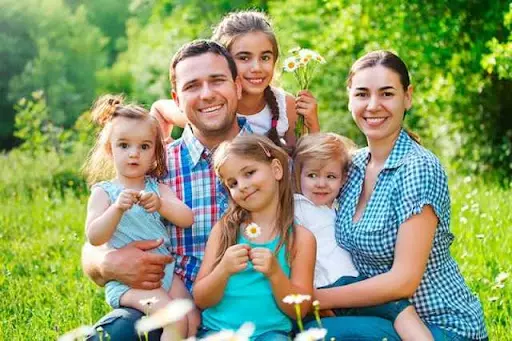Task 1
Imagine that you are preparing a project with your friend. You have found some interesting material for the presentation and you want to read this text to your friend. You have 1.5 minutes to read the text silently, then be ready to read it out aloud. You will not have more than 1.5 minutes to read it.
The London Eye, or the Millennium Wheel, is a revolving observation wheel on the South Bank of the River Thames in London. It is the world’s largest observation wheel and most popular paid tourist attraction in the UK. There are 32 capsules on the London Eye. They are numbered from 1 to 33 for superstitious reasons, with capsule 13 being left out for good luck. The wheel offers some of the greatest panoramic views of the city.
In March 2020, the London Eye celebrated its 20th birthday by turning several of its pods into experiences themed around London. The experiences included a pub in a capsule, a west end theatre pod and a garden party with flower arrangements to represent the eight London Royal parks. The wheel has transformed London’s landscape and stands today as a national symbol that celebrates Britain’s innovation and technological success in the 21st century.
Task 2
Study the advertisement.
Your Epic Travel Adventure!

You are considering booking an adventure trip and now you’d like to get more information. In 1.5 minutes you are to ask four direct questions to find out about the following:
- adventure travel locations
- guides
- average group size
- refund policy
You have 20 seconds to ask each question.
Suggested answers
1. What adventure travel locations does your tour company offer?
2. What qualifications and experience do your guides have?
3. What is the average group size for your adventure trips?
4. What is your company’s refund policy?
Task 3
You are going to give an interview. You have to answer five questions. Give full answers to the questions (2–3 sentences). Remember that you have 40 seconds to answer each question.
Tapescript for Task 3
Suggested answers
Interviewer: Hello everybody! It’s Teenagers Round the World Channel. Our guest today is a teenager from Russia and we are going to discuss fast food. We’d like to know our guest’s point of view on this issue. Please answer five questions. So, let’s get started.
Interviewer: What fast food restaurants are popular with teenagers?
Student: In Russia, fast food chains such as Burger King and KFC are popular among teenagers. They also enjoy Vkusno i Tochka, based on the former Russian McDonald’s chain.
Interviewer: Are you a fast food lover? How often do you eat fast food?
Student: I’m a fan of fast food. I eat it a couple of times a week. It’s fun to try new places and new foods.
Interviewer: Why is fast food so popular?
Student: I think fast food is popular because it’s convenient and affordable. It often offers a wide variety of menu options that appeal to different taste preferences.
Interviewer: What problems can junk food cause?
Student: I think eating junk food regularly can cause serious health problems. It can also make us develop poor eating habits that may be hard to break.
Interviewer: What is the future of fast food?
Student: I think that in the future, fast food will have more emphasis on healthier options. Perhaps fast food restaurants will also adopt more eco-friendly practices. (Alternatively, fast food might become less popular as people become increasingly aware of the impact it has on their health and the environment.)
Interviewer: Thank you very much for your interview.
Task 4
Imagine that you and your friend are doing a school project “Family types”. You have found some photos to illustrate it but for technical reasons you cannot send them now. Leave a voice message to your friend explaining your choice of the photos and sharing some ideas about the project. In 2.5 minutes be ready to:
- explain the choice of the illustrations for the project by briefly describing them and noting the differences;
- mention the advantages (1–2) of the two family types;
- mention the disadvantages (1–2) of the two family types;
- express your opinion on the subject of the project – which of the family types presented in the pictures you’d prefer and why.
You will speak for not more than 3 minutes (12–15 sentences). You have to talk continuously.
Suggested answer
Hi Alex! I’ve found two photos to illustrate our project on family types. I’ll explain my choice of the photos and share some ideas in this voice message.
The first one is of a big family, with two parents and four children in a natural setting, maybe a park or a forest. They look happy together, posing for the camera. The second one shows a small family, with two parents and one child. They seem to be in the process of moving into a new house. I think the photos will be a good fit for our project because they illustrate two different types of families: a large family and a small family.
You know, both big and small families have their unique advantages and disadvantages, which we could add to our project to make it stand out. For example, growing up in a big family means you share experiences with your siblings, which makes you feel close. But some of the drawbacks of big families include limited privacy and increased competition for resources and attention.
In a small family, on the other hand, you have more attention from your family, but small families may lead to loneliness and higher expectations from parents.
Personally, I’d prefer to be part of a big family because I value the sense of community and support that comes with having many family members.
(Honestly, I’d prefer a small family because I like a quieter and more private environment that may not be possible in a large family.)
Well, that’s it for now. Anyway, let’s discuss more when we meet up. Bye!

